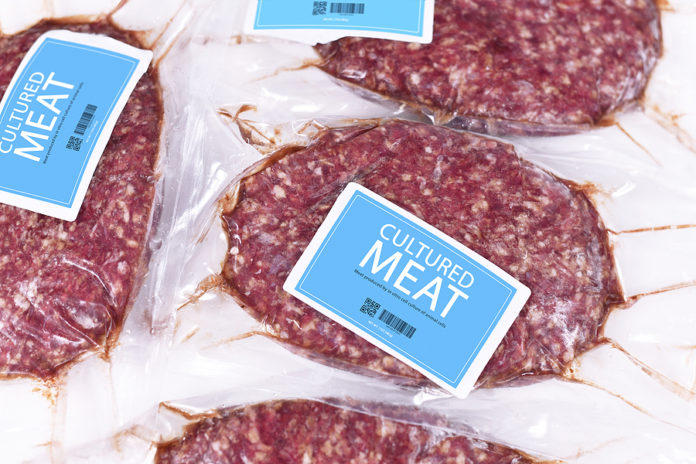
By Omri Schanin, Co-Founder and Deputy CEO of MeaTech
Consumer interest in cultivated meat (sometimes called clean or cultured meat) products — beef, chicken and more — has producers of conventional meats watching the space very closely. They should be.
Myriad sources show meat agriculture as it exists today cannot sustain the ever-increasing volumes required to feed the world’s rapidly growing population in the coming decades. A National Geographic report on food challenges shows feeding the global population by 2050 will require doubled crop production and much more meat protein than is produced now. While fully plant-based alternatives are good options for filling the meat protein gap, most lack the authentic meat taste and mouthfeel many consumers desire. For now, that gives meat, poultry, and pork producers an edge, but it likely will not be a long-term advantage as cultured meat options develop.
While many consumers may demand “real” meat, getting it to people where they live is already problematic. Factory farms and centralized meat production facilities are quickly losing favor with consumers due to greater consumer awareness of animal treatment. More recently, the JBS Meat ransomware attack exposed some of the weak links and fragilities in the U.S. meat supply chain. With the number of humans expected to reach 9 to 10 billion by 2050 – up from 7.8 billion in 2020 – growing food closer to population centers will be crucial to reduce waste and simplify distribution chains. According to the United Nations Environment Programme (UNEP), about a third of food produced in the world for human consumption every year is lost due to spoilage, poor storage, or wasted outright. Not only does that use valuable arable farmland for growing crops no one will ever eat, it also involves raising animals that will be slaughtered and packaged, only to pass their expiration date in transit or on a store shelf. Cultivated meats are real meat and facilities to create them can be built nearly anywhere.
There is also increasing public awakening to the urgency of climate change and the negative environmental impacts associated with industrial animal agriculture, including deforestation of the Amazon rainforest. Additional concerns around pesticides, waste runoff, methane gas contributing to climate change, and other environmental concerns have many consumers looking for other options that are less harmful to the planet. Cultivated meat is a good solution.
The idea most humans should convert to vegetarianism or veganism is noble, but the shifting tide toward those lifestyles remains relatively low, with only about 3% of the U.S. population identifying as vegan. Despite even the best of intentions, many humans find it difficult to shed their carnivorous roots. For now, the growing trend is in flexitarianism, in which consumers eat less animal protein and more plant-based meals, without giving up animal-based foods altogether. However, those flexitarians may be consuming dairy and fish more than beef and chicken, as the same article cites a study that shows people who identify as meat eaters dropped from 85% two years ago to 71% today. Meat producers would like to reverse that trend.
One way to appeal to all types of eaters is by providing sustainable, ethically responsible foods that provide full meat flavor and can be created close to the areas in which they will be consumed. Cultivated meat – cellular agriculture – provides a more sustainable alternative that is less prone to wastage. Supplementing conventional ag with cultured production makes sense. It is simply another farming method to add to the mix.
Getting this nascent market for cultivated meats up and running quickly may go a long way toward feeding populations and even helping save the planet for future generations. Many big ag companies are already investing in animal-based proteins, even if those farms are laboratories, 3D bioprinters, and bioreactors.
The sustainability and eco-friendly benefits of ethical alternatives to today’s meat options are worth exploring. Many consumers want the taste of meat without the environmental and ethical baggage, and that’s what they can get with cultivated foods grown from stem cells harvested from the umbilical cords of cows with no harm to the animal. It mimics the taste and texture of farmed meat, and it is created without growth hormones or antibiotics, making it a truly clean alternative. Moreover, as the technologies are perfected, we can look forward to price parity with conventional meat. Unlike conventional ag operations, however, cultured meat can be easily and quickly scaled up as demand grows. The foods can be created very close to where they will be consumed – even if that’s in a desert location where it is not easy to raise livestock.
The technology for producing cultured meats is advancing quickly. There are already many examples of meats being created, from fats to small pieces of meat. As the technology advances, those in the best position to use the technology, promote and foster the resulting brands, and capitalize on the new market are those who are already major players in the traditional meat market today.
 Omri Schanin is the Co-Founder and Deputy CEO of MeaTech, (NASDAQ: MITC) a research and development company aiming to develop commercial and sustainable technologies to manufacture alternative proteins with no need for animal slaughter. For details, visit http://www.meatech3d.com.
Omri Schanin is the Co-Founder and Deputy CEO of MeaTech, (NASDAQ: MITC) a research and development company aiming to develop commercial and sustainable technologies to manufacture alternative proteins with no need for animal slaughter. For details, visit http://www.meatech3d.com.






